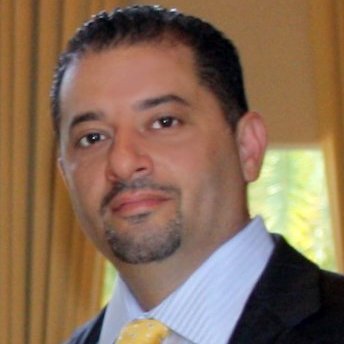$200 Million in Revenue Catering to the Bottom of the Pyramid: Issa Asad, CEO of Q Link Wireless (Part 1)

If you haven’t already, please study our Bootstrapping Course and Investor Introductions page.
This is a fascinating journey of an entrepreneur who has bootstrapped a $200 million business catering to poor people in the United States selling cellular phones and connections, and monetizing the data through advertising. In India, Reliance Jio has a similar strategy, by the way, for those interested in bottom-of-the-pyramid businesses.
Sramana Mitra: Let’s start at the very beginning of your journey. Where are you from? Where were you born, raised, and in what kind of background?
Issa Asad: I was born and raised in the United States. I am of Palestinian descent. I am one of 12 brothers and sisters. My father was a salesman who opened up convenience stores. When I was 15, I moved to South Florida. I went to high school in Florida. I went to the University of Miami and Florida International University and studied Biology.
Sramana Mitra: What year did you come out of college?
Issa Asad: 1995.
Sramana Mitra: The Internet was just becoming quite hot at that point.
Issa Asad: The Internet was a notion that people were figuring out how to use.
Sramana Mitra: What did you do when you came out of college?
Issa Asad: I went into medical school. I got out of that and then went to open a convenience store. Then, I became a distributor of phone cards throughout the United States. Next, I opened up my own company reselling phone cards. Then, I took that to a new level by becoming an actual telephone company providing carrier services for my own product. After that, I made a kiosk which is a Point of Sale system that sells phone cards throughout United States. I sold to almost 250,000 stores through 96 agents.
Sramana Mitra: What you just did was, gave me a resume.
Issa Asad: That was the overview.
Sramana Mitra: Let’s figure out how you put one foot before the other. You had a bunch of jobs after you came out of college?
Issa Asad: Yes. When I got out of college, the first thing I did was open up a convenience store. I realized that as a person who owns a convenience store, there was no future in it. You worked 18-hour days. It was like having a job. It wasn’t every exciting. It really had no future. I went out and saw these phone cards distributors coming into my own store and we were selling them.
I went to a couple of companies and I was able to acquire contracts to start becoming a reseller of phone cards. I went out and started going door to door and trying to resell phone cards to stores and establish a brand out there. I did that for all of South Florida. I had almost 9,000 stores in South Florida.
Sramana Mitra: How did you get all these things financed?
Issa Asad: I was buying little by little. That didn’t work because it wasn’t enough. Then I started becoming a master agent. That still had its limitations. No matter how I distributed, I had to pay for it. One shopkeeper would pay cash and others would want credit terms.
I was able to juggle the money and figure out how to take the money paid from one to make the other one work. I was trying to work something out where I was able to utilize the money some people were paying while others wanted credit from the providers of phone cards. That had its limitation.
This segment is part 1 in the series : $200 Million in Revenue Catering to the Bottom of the Pyramid: Issa Asad, CEO of Q Link Wireless
1 2 3 4 5 6
Featured Videos
Can 1M/1M Help Me Raise Money?
How Does 1M/1M Democratize Entrepreneurship Education?
How Does 1M/1M Democratize Management Consulting?
When Is The Right Time To Join 1M/1M?
Can 1M/1M Help Me With Business Development?
Can 1M/1M Help Me With Market Sizing?
Can 1M/1M Help Me Validate My Product?
Will I Have Private 1-on-1 Sessions In 1M/1M?
How Does 1M/1M Help Entrepreneurs Connect With Silicon Valley?
Mentoring or Consulting?
Why Does 1M/1M Charge $1000 a Year?
Why Does 1M/1M Partner With Local Organizations?
Why Don\’t Mentoring Networks Work?
Why Is It Important To Study With 1M/1M Now?
Dan Stewart Story
Vikrant Mathur Story
